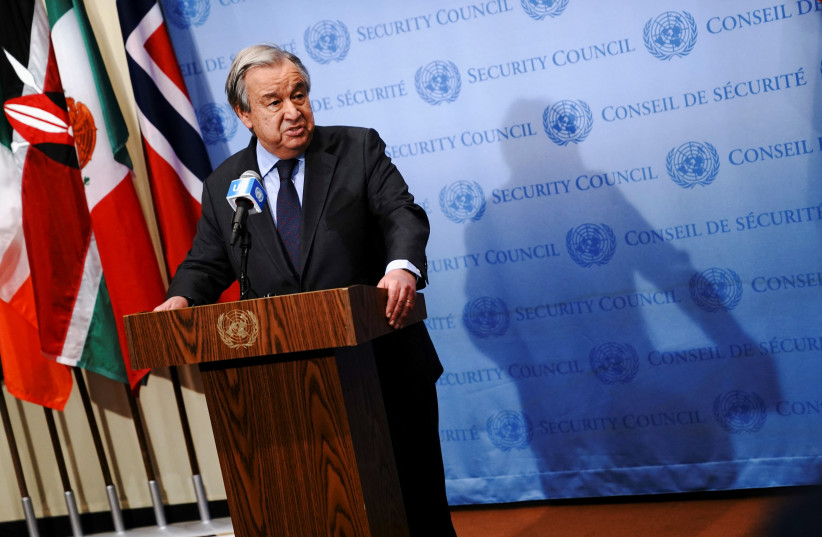“Allegations of arms transfer to non-state actors continue and remain of serious concern,” United Nations Secretary-General Antonio Guterres said.

Transfer of arms to Hezbollah, Israeli fly-overs in Lebanese air space and lack of freedom of movement for peacekeepers continue to raise concern, United Nations Secretary-General Antonio Guterres said in a report that was debated on Thursday in New York.
“Allegations of arms transfer to non-state actors continue and remain of serious concern,” Guterres wrote in advance of a UN Security Council closed door consultation on continued violations of Resolutions 1701, which set the ceasefire terms for the end of the Second Lebanon war in 2006.
Guterres took issue in his report with the continued presence of an armed Hezbollah, a militant Iranian proxy which Israel holds to be a terror group. The Lebanese army is supposed to be the only armed group in the country, but Hezbollah continues to operate and arm itself along Israel’s border.
“No progress was achieved with respect to the disarming of armed groups. Hezbollah continued to acknowledge publicly that it maintains military capabilities,” Guterres said.
He took both Lebanon and Israel to task for aerial violations, primarily for drone activity. The UN Interim Force in Lebanon, Guterres said, recorded 131 airspace violations by the IDF, totaling 197 hours and 45 minutes from the period of October 26, 2021 to February 18 of this year.

The IDF, in turn, reported that on February 17 it shot down a drone which crossed the Blue Line close to Aytarun, according to the report. The next day, the IDF observed a Hezbollah-linked drone crossing south of the Blue Line, Guterres wrote.
In this same period there were increased restrictions on UNIFIL’s movements, he explained, during which there were 298 attempts by Lebanese civilians to illegally cross the border, of whom 233 were shepherds, 19 other civilians and the remainder unknown individuals in civilian dress, the report stated.
To ensure that the area between Israel’s northern border and the Litani River is weapons free, UNIFIL operated 16 permanent checkpoints and 122 temporary ones. It also enacted 298 counter-rocket launching operations on average each month. It observed 306 incidents in which there were unauthorized hunting weapons and another three incidents of illegal arms.
Content retrieved from: https://www.jpost.com/arab-israeli-conflict/article-701641.